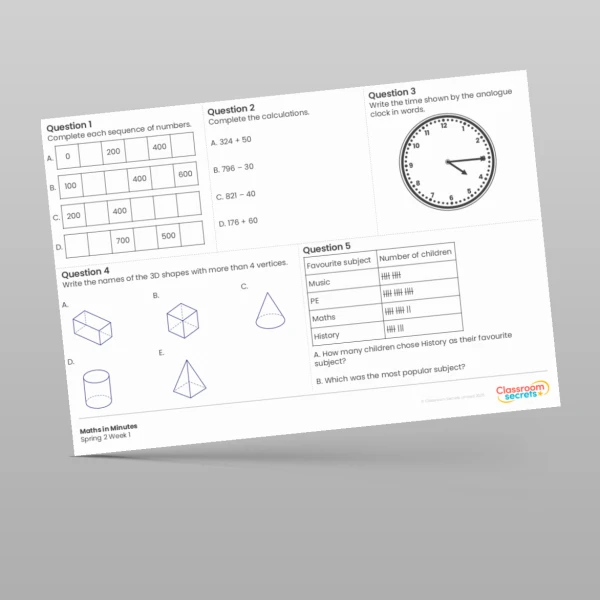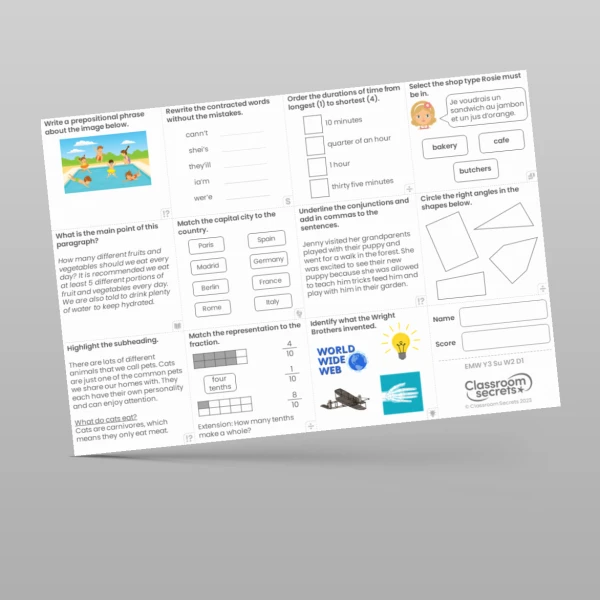

This Year 3 Maths in Minutes resource is designed to promote quick recall and retrieval of children's knowledge and prior learning, recapping a number of objectives from Years 2 and 3.
There are three sets of five questions that cover a variety of maths skills in the areas of number, calculation, measures, geometry and statistics. This activity is perfect to use during registration, at the start of a maths lesson or whenever you have some time to spare. We've specially designed this resource to be displayed on the interactive whiteboard to save on printing costs. Try it today!
Curriculum Objectives
- Choose and use appropriate standard units to estimate and measure length/height in any direction (m/cm); mass (kg/g); temperature (°C); capacity (litres/ml) to the nearest appropriate unit using rulers, scales, thermometers and measuring vessels
- Tell and write the time to five minutes, including quarter past/to the hour and draw the hands on a clock face to show these times
- Solve simple problems in a practical context involving addition and subtraction of money of the same unit, including giving change
- Compare and sort common 3-D shapes and everyday objects
- Identify 2-D shapes on the surface of 3-D shapes, [for example, a circle on a cylinder and a triangle on a pyramid]
- Order and arrange combinations of mathematical objects in patterns and sequences
- Interpret and construct simple pictograms, tally charts, block diagrams and simple tables
- Ask and answer simple questions by counting the number of objects in each category and sorting the categories by quantity
- Count from 0 in multiples of 4, 8, 50 and 100
- Compare and order numbers up to 1000 / Read and write numbers up to 1000 in numerals and in words
- Recognise the place value of each digit in a three-digit number (hundreds, tens, ones)
- Add and subtract numbers mentally, including: three-digit number and ones; three-digit number and tens; three-digit number and hundreds
- Add and subtract numbers with up to three digits, using formal written methods of columnar addition and subtraction
- Estimate the answer to a calculation and use inverse operations to check answers
- Solve problems, including missing number problems, involving multiplication and division, including positive integer scaling problems and correspondence problems in which n objects are connected to m objects
Tags
Spring
2M2
2M4a
2M9
2G1b
2G3
2P1
2S1
2S2a
3N1b
3N2a
3N3
3C1
3C2
3C3
3C8
Maths in Minutes











